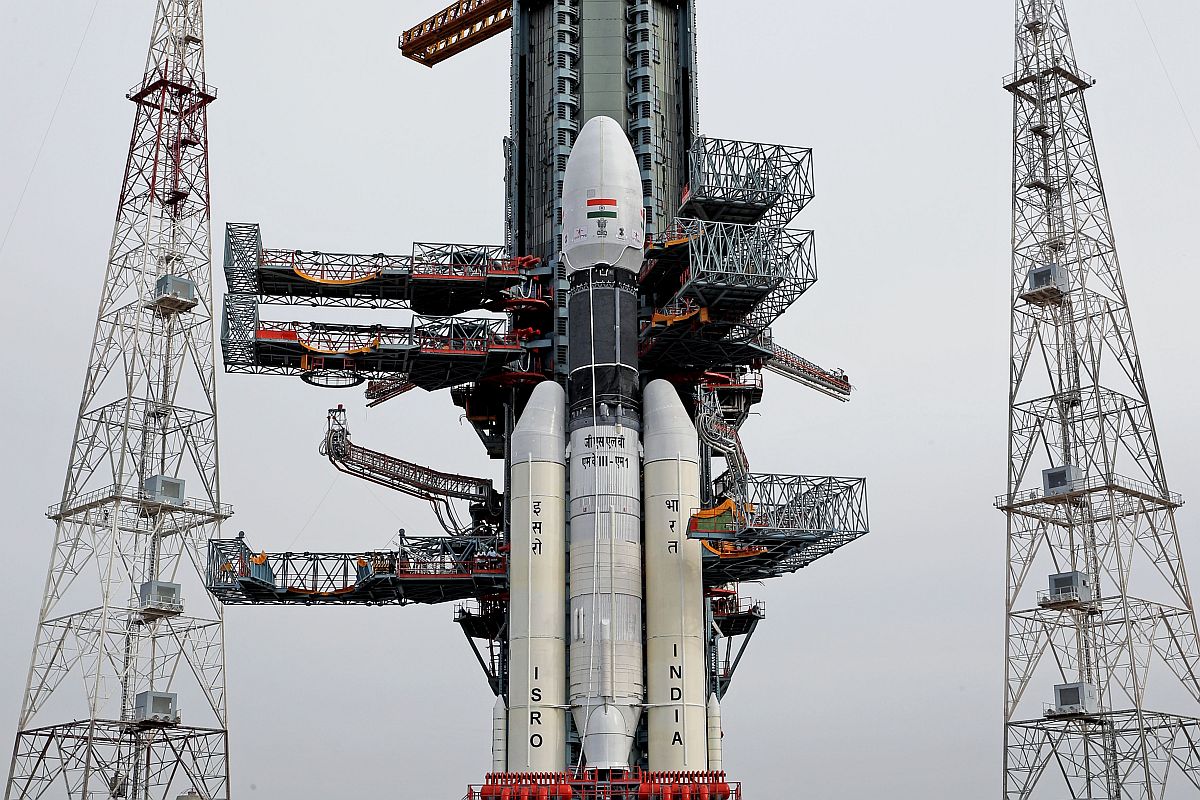Chandrayaan-2, India’s second moon mission spacecraft, lifted off successfully onboard the “Bahubali” rocket from Satish Dhawan Space Centre in Sriharikota in Nellore district of Andhra Pradesh on Monday afternoon.
The Geosynchronous Satellite Launch Vehicle-Mark III (GSLV-Mk III), also called the “Bahubali”, carrying the satellite aims to land near the south pole of the moon.
Advertisement
Minutes after the launch, GSLVMkIII-M1 successfully injected Chandrayaan-2 spacecraft into the earth’s orbit. Indian Space Research Organisation (ISRO) shared an image of the separation.
The countdown for the launch of India’s ambitious mission to the Moon, Chandrayaan-2, had started at 6.43 pm on Sunday, according to the ISRO.
The rocket and spacecraft’s systems passed through checks and fueling during the period.
According to ISRO quoted by IANS, fueling of the second stage/engine with unsymmetrical dimethylhydrazine (UDMH) and nitrogen tetroxide (N2O4) had been successfully completed.
The rocket carrying Chandrayaan-2 was originally scheduled to lift off on July 15 early morning but was aborted after a “technical snag” was observed in it, nearly an hour before launch.
The 640-tonne rocket Geosynchronous Satellite Launch Vehicle-Mark III (GSLV-Mk III) nicknamed “Baahubali” carrying the orbiter, lander, and rover was to take off at 2 hours 51 minutes, early on July 15 morning.
A week later, the ISRO announced that the “fault” had been rectified and that the Chandrayaan-2 spacecraft will be launched on July 22.
The Rs 978 crore Chandrayaan-2 mission is a prestigious one as it is aimed to make India the fourth nation in the world to land and ride on the moon after the US, Russia and China.
People gathered to witness the historic launch.
Chandrayaan-2 is a sequel to Chandrayaan-1, India’s maiden unmanned moon mission which was announced by late Prime Minister Atal Bihari Vajpayee on the 56th Independence Day in 2003.
The spacecraft was launched successfully on October 22, 2008, from the Satish Dhawan Space Centre (SDSC), Sriharikota. The spacecraft with an initial weight of approximately 590 kg was launched on a Polar Satellite Launch Vehicle (PSLV) C 11.
By August 2009, the orbiter started witnessing technical issues which included failure of the star sensors. And due to poor thermal shielding, the Chandrayaan-1 stopped sending radio signals on August 28, 2009. ISRO speculated that it might have crashed on the moon’s surface.
The mission was terminated abruptly after 312 days as ISRO lost contact with the spacecraft on August 29, 2009.











